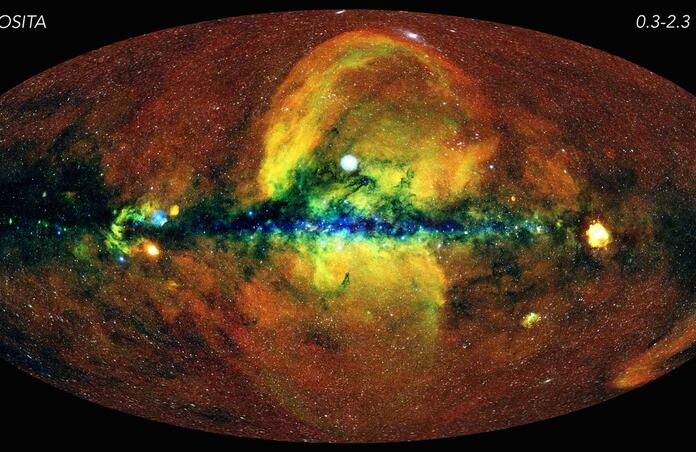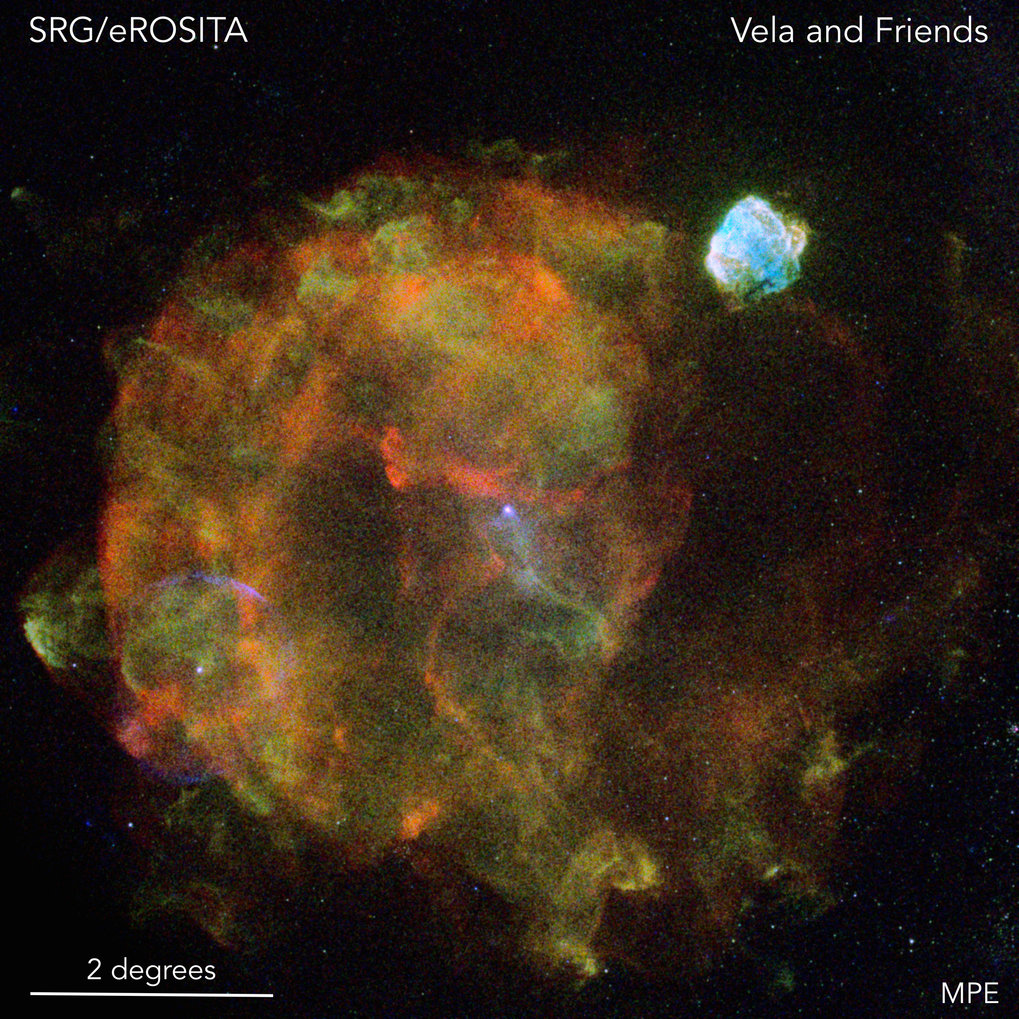eROSITA Space Telescope Captures Incredible X-Ray View of the Universe

The space telescope eROSITA just finished its first comprehensive night-sky survey, and released a stunning compiled map containing over one million X-ray objects.
The map contains a variety of active galactic nuclei, stars with powerful magnetically active coronae, neutron stars, black holes, white dwarves, and supernova remnants from both neighboring galaxies and the Milky Way itself. Over only 182 days, the survey effectively doubled the number of X-ray sources scientists have collectively discovered in the past 60 years. There are already quite a few night-sky surveys, but most cover different wavelengths and none have found this many objects in X-ray view.
Data From eROSITA
The million X-ray sources captured by the space telescope offer a literal mountain of data for scientists to pour over. In addition to brilliantly displaying just how hot and energetic the Universe truly is, eROSITA captured even more—everything from neutron stars merging to black holes eating entire stars. The data will allow scientists to study the nature of these objects in greater detail than ever before. “Large sky areas have already been covered at many other wavelengths, and now we have the X-ray data to match. We need these other surveys to identify the X-ray sources and understand their nature,” said Mara Salvato, a scientist at MPE. “eROSITA often sees unexpected bursts of X-rays from the sky. We need to alert ground-based telescopes immediately to understand what’s producing them.”

Aside from the precise and continuous monitoring required to operate eROSITA, compiling the image of one million x-ray sources hasn’t been an easy task. The operations team at MPE has already processed over 165 GB of data, which may not sound like much now, but it is when trying to collect that data from a spacecraft over one million kilometers away. Despite the distance, the team has been able to keep the instrument running smoothly, and with exceptional efficiency. Miriam Ramos-Ceja, an MPE operations team member, states that “we check and monitor the health of the instrument on a daily basis, in cooperation with our colleagues in Moscow who operate the SRG spacecraft. This means we can respond quickly to any anomalies. We’ve been able to react to these immediately to keep the instrument safe, while collecting data at ~97% efficiency. It's amazing to be able to communicate in real-time with an instrument located 1.5 million kilometres away!”
Endless Possibilities
While the telescope has already made impressive headway in a short amount of time, scientists at MPE intend to take it further. Kirpal Nandra, head of the high-energy astrophysics group at MPE, mentions that “with a million sources in just six months, eROSITA has already revolutionized X-ray astronomy, but this is just a taste of what’s to come. This combination of sky area and depth is transformational. We are already sampling a cosmological volume of the hot Universe much larger than has been possible before. Over the next few years, we’ll be able to probe even further, out to where the first giant cosmic structures and supermassive black holes were forming.”